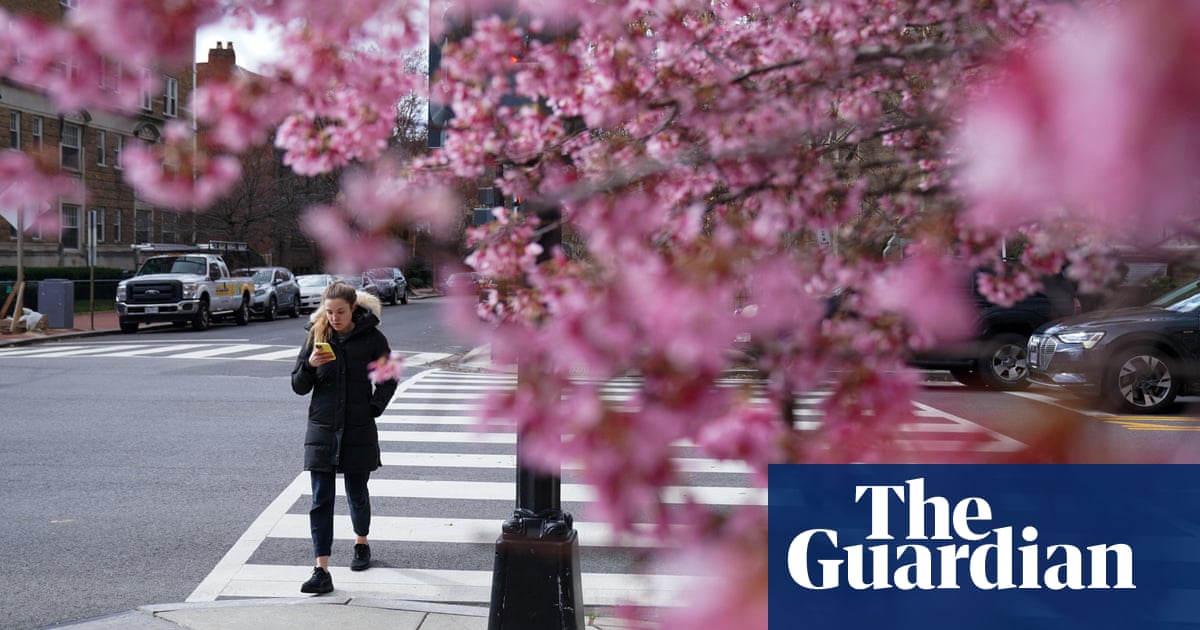
Chaos erupted at Bill West’s business in Page, Arizona, last week when he was forced to tell dozens of paid clients their summer vacations were either canceled or on hold – effective immediately.
West, the owner of a houseboat timeshare company, was scrambling after record-low water levels at Lake Powell – one of the most popular motorized boating destinations in the US – disrupted recreational and tourism activities throughout the region.
The National Park Service abruptly announced earlier this month that houseboats could no longer use the Wahweap Launch Ramp, the busiest boat launch site in the area. Boats already cast out into the water were warned they had less than a week to return to land, or risk getting marooned.
West sat in traffic for more than an hour last Friday trying to corral 30 of his houseboat timeshares from the 180-mile-long reservoir before the final deadline. Dozens of vehicles stretched for at least a mile waiting for their turn on a concrete ramp that no longer reached the water. Even four-wheel-drive trucks were getting stuck in the mud as the Lake Powell shoreline retreated faster than federal water managers expected.
During what should have been prime houseboat vacation season, West says he’s forced to cancel timeshare reservations for more than 200 trips this summer. With his business slamming to a halt, he says he may have to lay off as many as 40 employees.
“This is a crisis for our community that is just as bad as Covid,” West said of Page, which has a population of 7,500 and is the main service hub for Lake Powell. “It is peak season and the whole town is being hit hard – the restaurants, the grocery stores, the bars, we are all feeling it.”
While climate change has exacerbated wildfires, heatwaves and flash floods this summer, it is also taking a heavy toll on the tourism industry that’s dependent on Lake Powell. Last week the water line reached a historic low of 3,554ft, a level that has not been seen since 1969, when the reservoir was first filled. The giant reservoir is currently three-quarters empty and will keep dropping at least through next spring due to record low snowpack levels in the Colorado River basin.
If this trend continues, the Park Service is advising boating-based businesses like West’s to make unpredictability part of their business model.
“We sent out plenty of advisories to stakeholders about the possibility of very low lake levels this year and no one took it seriously,” said Billy Shott, superintendent of the Glen Canyon National Recreation Area, which manages Lake Powell. He compares the park’s regular drought notices to routine avalanche alerts in the mountains. “Well, now the avalanche has actually happened. Climate change has become real at Lake Powell.”
Out of seven public boat launch ramps at Lake Powell, only Bullfrog in southern Utah – a five-hour drive from Wahweap – remains reliably functional due to a series of recent ramp extensions. But that too may soon become inaccessible. The Bureau of Reclamation predicts there is a 79% chance Lake Powell will drop another 29ft from the current historic low “sometime next year”.
According to a National Park Service report, Glen Canyon had 4.4 million visitors in 2019, making it one of the most visited parks in the country. The visitors spent $427m in Page and the surrounding area and supported 5,243 jobs, including providing a vital source of employment for the nearby Navajo Nation.
Brent Dooley says it’s been an annual family tradition since 2004 to spend a week house-boating on Lake Powell. A total of 12 family members were planning to be on the trip this year until they were forced to make an abrupt change.
“We are devastated that our vacation was cancelled,” said Dooley. “We had a really tough year with deaths in the family and all of us being together was going to be our saving grace. But then the lake level dropped and, boom, our vacation is gone.”
Beyond impacts to recreation, climate change is creating other big problems for Lake Powell and its sister reservoirs in the Colorado River storage system that provides water to 40 million people in the western United States. The entire system is depleted from extreme drought conditions and Lake Mead, the country’s largest reservoir, is expected to reach a record low in August that will trigger the first ever mandatory water cutbacks to Arizona and Nevada.
As water managers and the Park Service scramble to adapt an infrastructure that was designed to function optimally when Lake Powell was full – which last happened in 1999 – some environmentalists are fighting to protect the nearly 100,000 acres of land that has emerged from beneath the high water mark.
Before it was buried by Lake Powell, the sprawling region of slickrock canyons called Glen Canyon was described by environmentalist and author Ed Abbey as the “living heart” of the Colorado River. And now that environmental groups, scientists, and cartographers have access to document the restored ecology in hundreds of side canyons, they say it’s time for the park officials to no longer focus solely on maintaining water-based recreation at Lake Powell.
“We are not anti houseboat, we are just pro-Glen Canyon,” says Eric Balken, executive director of the not for profit Glen Canyon Institute based in Salt Lake City. “We want the ecological values of Glen Canyon to be part of the discussion about how to move forward during climate change.”
Balken says there is huge potential for other recreational opportunities in the side canyons that emerge out of Lake Powell. And the Page boating industry agrees that the newly accessible scenic areas in Glen Canyon are a big draw for tourists. “My customers say they have never seen so many beautiful places to park a houseboat,” says West. “The lower the lake gets the better it becomes for camping.”
If only they could get there.












